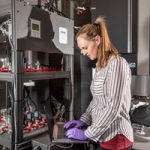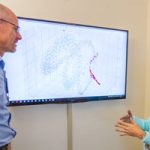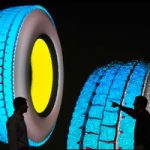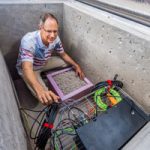Thwarting oil-pipeline corrosion by identifying nanoscale villains
Researchers at Sandia, the DOE Center for Integrated Nanotechnologies and the Aramco Research Center in Boston have found that a particular form of nanoscale corrosion can cause variations in material longevity that unpredictably decrease the working life of steel pipes.
Future hypersonics could be artificially intelligent
A test launch for a hypersonic weapon — a long-range missile that flies a mile per second and faster — takes weeks of planning, and it's uncertain how useful test systems will be against urgent, mobile or evolving threats. But Sandia's hypersonics developers think artificial intelligence and autonomy could slash these weeks to minutes for deployed systems.
Sandia spiking tool improves artificially intelligent devices
Whetstone, a software tool that sharpens the output of artificial neurons, has enabled neural computer networks to process information up to a hundred times more efficiently than the current industry standard. The software, created by Sandia neuroscientists, greatly reduces the amount of circuitry needed to perform autonomous tasks and is expected to increase the penetration of artificial intelligence into numerous markets.
Celebration at the intellectual property finish line includes family and friends
Sandia researchers were joined by partners, parents and friends in December to celebrate the ninth annual Innovation Celebration, organized by Integrated Partnerships Organizations. The event, at the Albuquerque Museum, recognized individuals who added patents and commercial copyrights to Sandia’s intellectual property portfolio in 2017.
Sandia microneedles technique may mean quicker diagnoses of major illnesses
A new technique using microneedles that are able to draw relatively large amounts of interstitial fluid — a liquid that lurks just under the skin and carries more immune cells than blood — could be effective in rapidly measuring exposure to chemical and biological warfare agents, as well as diagnosing cancer and other diseases.
Sandia researchers win five R&D 100 awards
Sandia inventions and co-inventions have captured five R&D 100 Awards for 2018. Competitors for the awards include an international pool of universities, corporations and government labs, and the sole criterion for winning is “demonstrable technological significance compared with competing products and technologies.” Since 1976, Sandia has earned a total of 124 awards. Read more to learn about this year's winners.
‘Research Club’ enhances research culture and capabilities
Sandia Fellow Kathy Simonson has started a "Research Club" to help Sandia researchers better prepare Laboratory Directed Research and Development ideas and proposals. Having reviewed hundreds of research proposals during her career, Kathy noticed many of the same issues kept cropping up in weaker proposals, which gave her the idea.
CRADA boom spurs innovation, collaboration with Sandia Labs
Sandia signed 42 CRADAs in fiscal year 2018, more Cooperative Research and Development Agreements than in any previous year this century, sparking dozens of new collaborations and potential technological innovations. A CRADA is an agreement between a government agency and a nonfederal entity to work together on research and development.
Majority rules when looking for earthquakes, explosions
Finding the ideal settings for each sensor in a network to detect seismic activity can be a painstaking and manual process. Sandia researchers are working to change that. They have developed an algorithm that automatically adjusts seismic activity detection levels for each network sensor, tuning out everyday vibrations such as traffic or footsteps to better detect earthquakes and explosions.
Sandia Labs names first Jill Hruby Fellows
Mercedes Taylor and Chen Wang are Sandia’s first Jill Hruby Fellows. The honorees have each been awarded a three-year postdoctoral fellowship in technical leadership, comprising national security-relevant research with an executive mentor.









